#Opensource cloud
Explore tagged Tumblr posts
Text

#Guess Can you recognize this logo?
What’s your guess? Comment Below👇
💻 Explore insights on the latest in #technology on our Blog Page 👉 https://simplelogic-it.com/blogs/
🚀 Ready for your next career move? Check out our #careers page for exciting opportunities 👉 https://simplelogic-it.com/careers/
#LogoChallenge#TechTrivia#GuessTheLogo#Logo#Terraform#SimpleLogicIT#MakingITSimple#OpenSource#Database#OpenSourceDatabase#OpenSourceInfrastructure#Cloud#SimpleLogic#MakeITSimple#GuessGame#TechLogo
0 notes
Text
Problem of Every Graphic/Visual Designer
Have you ever used other design softwares instead of Adobe?
If not, Are you the one carrying a legit subscription?
IF NOT, Then are you using it for making personal projects or doing client work?
Let's discuss all of this in the post.
We designers usually get introduced to the world of digital design with softwares like Adobe Illustrator, Photoshop, After Effects, Premiere Pro, and sometimes CorelDRAW.
But how many of you have heard the names of Inkscape, Gimp, CavalryApp, DaVinci Resolve, and Kdenlive?
These are a part of a category called open source softwares.
Adobe has been the market leader when it comes to digital design. They have been adding innovative features to make the processes easier. The way digital design is today is because of the amount of focus they have put in to benefit their customer.
Even they have tried to make their plans cheaper for the first year for working professionals to make their services accessible. But the fact that the amount of money we as design students spend on learning that is graduation is already very high for a middle-class family, needless to say.
Also, if we complete this line of education. Then comes the career opportunities. If somebody goes for full-time employment, chances are that you may get the subscription if you opt for an established company.
But if you want to work as a freelancer. Then again things are different. Because you initially do not take the risk of investing the money in softwares for the first year and then paying a massive amount to continue the next year. As the price is much higher as compared to the first year.
I left Adobe Creative Cloud Suite in the year 2019 and shifted completely to open-source applications after my boss in my first job told me to do so. Thank You, Sir.
But the problem is that, except for Figma, I do not enjoy the exciting features of the softwares I use.
Like the pen tool in Illustrator made my illustrations look so good that I miss it.
The last proper digital caricature and portrait was done by me in Photoshop.
The last proper animation also I think was what I did in After Effects.
I want companies and other designers to understand that if you are hiring candidates, then Adobe can be an important factor while hiring.
Open source softwares also deliver 75-80% of the results regarding features with whatever is available.
But how many people do you think can afford these highly priced softwares?
And will it be legal for somebody to freelance with such softwares?
Let me know about your views in the comments section. Let's see if Adobe too becomes a part of this discussion.
Video Credits: Movie Name: Roti Kapada Aur Makaan Channel Name: Ultra Bollywood (YouTube) Typeface: Open Sans Softwares: DaVinci Resolve and Figma
#Design Software#Adobe Vs OpenSource#Freelance Designer#OpenSource Design#Digital Design#Creative Cloud#Design Community#Inkscape#Affordable Design#Design Debate#roti kapada aur makaan#70s bollywood#designers humor#meme#graphic designer#visual designer#funny#comedy#dechnsign#theharssharora
1 note
·
View note
Text
Detailed Difference In GitHub & GitLab
GitHub and GitLab are both version control systems that allow developers to share and collaborate on code.
GitHub is a cloud-based while GitLab is open-source platform both version control system that allow developer to share & collaborate on code.
Read in Detail:
0 notes
Text

Mit Zwang in die Cloud
1Password zwingt Nutzer in die Cloud
Weil viele Menschen sich weigern ihre Daten irgendwelchen Clouds anzuvertrauen, kommt nun die Zwangsdigitaliserung. Die neue iPhone- und Android-Version 8 der Passwortverwaltung macht ein Cloud-Abo erforerlich. Alles soll mit 1Password 8 für iOS und Android schneller und besser werden.
Man muss dafür aber einen 1Password-Account in der Cloud haben. Lokale Tresore oder alternative Synchronisationmechanismen sind nicht mehr erlaubt. Schon in der Version 7 war es nicht mehr möglich lokale Tresore neu anzulegen. Für die neue Version gibt es auch keine Möglichkeit mehr die App zu kaufen, es gibt nur noch Abos.
Da können wir nur an die freien und kostenlosen Alternativen wie KeePassX als Passworttresor und VeraCrypt für die Datenscherschlüsselung erinnern. Niemand muss beim Cloud-Wahnsinn mitspielen!
Mehr dazu bei https://www.heise.de/news/Passwortmanager-1Password-8-unterstuetzt-keine-lokalen-Tresore-mehr-7216560.html
Kategorie[21]: Unsere Themen in der Presse Short-Link dieser Seite: a-fsa.de/d/3wV Link zu dieser Seite: https://www.aktion-freiheitstattangst.org/de/articles/8564-20231024-mit-zwang-in-die-cloud.htm
#Cloud#1Password#App#Android#iOS#IPhone#VeraCrypt#KeePassX#OpenSource#Verbraucherdatenschutz#Datenschutz#Datensicherheit#Vertrauen#Verhaltensänderung#Smartphone#Handy#Zwangsdigitaliserung
1 note
·
View note
Text
building an opensource collection of 'net services
hi there! im mia :) im a computer nerd with too much time on her hands.
im making this post to bring a project of mine into the world; a fully opensource and collaborative collection of online tools. this will grow over time, but for now, there is one thing active and two planned. (read on below)
CalicoDrive
a nextcloud instance! currently offering a bunch of very useful things:
50GB of free cloud storage
a Markdown notetaking tool
a shareable, open calendar
a photo gallery
web bookmark storage, and
some organisation and collaboration tools.
many of the cloud storage services we rely on are corporate, and require exorbitantly priced subscriptions. alongside that, data on them is often subject to a huge array of impenetrable terms/conditions.
what makes this different? firstly, your data is controlled by you. it is entirely encrypted on disk and can only be decrypted with your selected password. you own the data the same way you would were it on an external hard drive or flashstick.
secondly- its free! while you can pay 20$ once off or 5$ a month to upgrade storage quota and support the project, the core of it is entirely and utterly free to use.
matrix.calicocore
(full disclaimer- this service isn't online yet. it's planned to be active within the next month at the very maximum, very likely sooner.)
what's matrix? i am absolutely sure you've heard of IRC- internet relay chat. im also sure you've heard of discord.
matrix is a modern federated chat protocol- if you took the best of IRC, and you took the best of Discord, and combined them into an opensource and *free* protocol for real-time messaging? that's matrix, baby!
matrix functions similarly to the fediverse (more on that later). when you sign up, you select a homeserver, which is the infrastructure your account is hosted on. your homeserver determines who you're federated with, your most easily accessible spaces, and the little tag at the end of your name.
so what's matrix.calicocore going to be? a homeserver! the idea here is to bring communication and community into our hands, and away from the hands of big tech corporations who really don't care about us. it'll be federated with other spaces and servers, and run collectively.
fedi.calicocore
if you've ever used mastodon, fedi.calicocore will be a server compatible with it. this is still in the very very early stages as a project, so i cant detail much, but stay tuned.
things to note, disclaimers, etc
this project is in its early days. i cant guarantee perfect stability, though it has been tested and run for a few days already. please don't expect a perfect replacement for existing services YET.
secondly, in regards to calicodrive; your data is fully encrypted in two ways, both within the nextcloud instance and on the physical spinning rust. this means if you majorly forget your password, there's a possibility of losing it- but that trade-off is worth it for the security.
this all sounds great! how can i sign up?
for now, this is the link to the nextcloud:
https://drive.calicocore.space
in the very near future, there'll be a central discussion space on the matrix, too, which you're encouraged to introduce yourself on!
lastly:
who is this for?
these services and tools are made by a disabled trans woman. they will prioritise people vulnerable on the current internet, and focus on building a safe space for trans, non-binary, and queer people; as well as disabled people and people of colour.
you can sign up if you are not one of these, however you will be expected to defer to the marginalised members and be generally respectful of the purpose of the space!
8 notes
·
View notes
Text
I will note that LibreOffice is free, opensource, actively maintained, not infected with AI bullshit, and the Kopyright Kops will NOT be kicking down your door over it. Other than checking for updates, and if you choose to save to a cloud account, it runs entirely offline, and updates will fix security holes if you are giving it online access. Also the download and installation footprint is still measured in megabytes, not gigabytes. Most of the difference, as far as i can tell, being aesthetic, not functional. It also happily reads and writes MSOffice formats if you need to, and will run on damned near any operating system that is more or less current.
Strong encryption while saving is also an option.

155K notes
·
View notes
Text
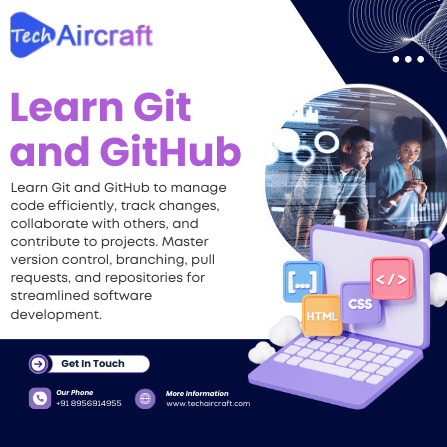
Learn Git & GitHub: The Backbone of Modern Development
Mastering Git and GitHub is essential for anyone venturing into software development, data science, or collaborative projects. Git, a distributed version control system, allows you to track changes in your code, revert to previous versions, and collaborate seamlessly with others. GitHub, built on top of Git, provides a cloud-based platform to host your repositories, manage pull requests, and contribute to open-source projects.
Starting with Git involves setting up your local environment, configuring your username and email, and learning basic commands like git init, git add, git commit, and git push. Once comfortable, you can explore GitHub to host your repositories, collaborate with others, and even deploy your projects using GitHub Pages.
For beginners, platforms like Codecademy offer interactive courses to get you started . Additionally, freeCodeCamp provides comprehensive tutorials covering Git and GitHub basics .
#Git #GitHub #VersionControl #SoftwareDevelopment #OpenSource #Collaboration #Coding #DeveloperTools #LearnToCode #GitTutorial #GitHubTutorial #Programming #TechSkills #CodeNewbie #VersionControlSystem
0 notes
Text
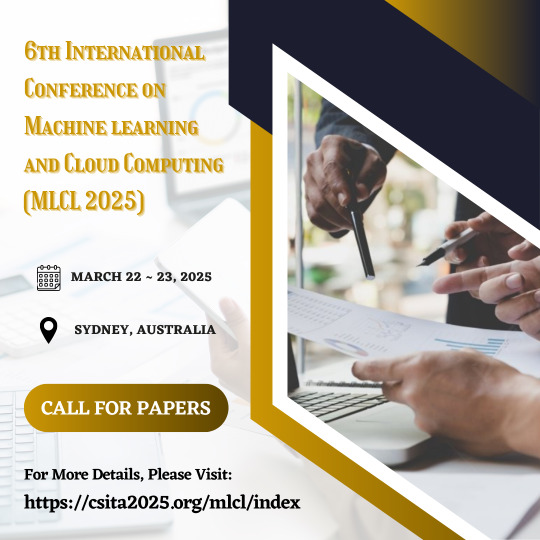
Submit Your Research Articles...!!! Welcome To MLCL 2025 6th International Conference on Machine learning and Cloud Computing (MLCL 2025) March 22 ~ 23, 2025, Sydney, Australia Webpage URL: https://csita2025.org/mlcl/index Submission Deadline: March 15, 2025 (Final Call) Contact us: Here's where you can reach us: [email protected] (or) [email protected] Submission URL: https://csita2025.org/submission/index.php
#machinelearning #cloudcomputing #virtualization #CloudStorage #ParallelProcessing #filesystem #programming #security #socialnetwork #cloudsecurity #consolidation #opensource #systemintegration #computing #EdgeComputing #deployment #artificialintelligence #DataSecurity #DataStorage #CloudServices #scalability #performance
0 notes
Text

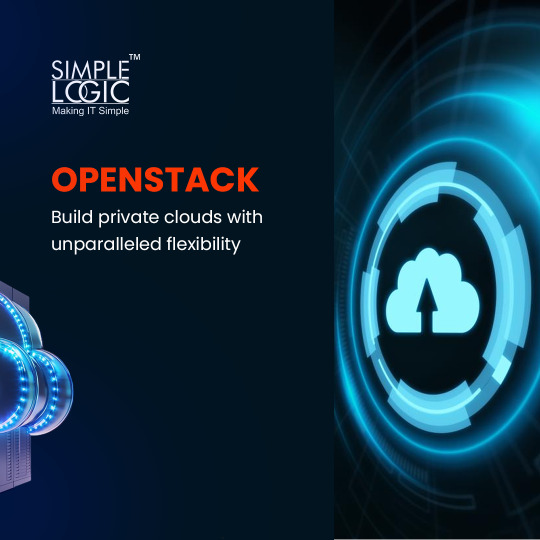
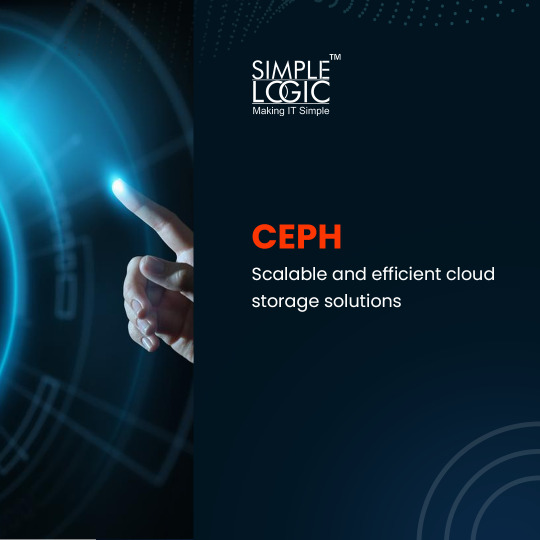

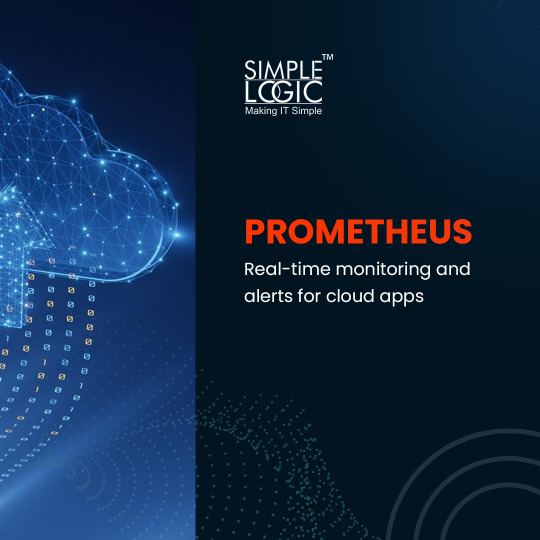

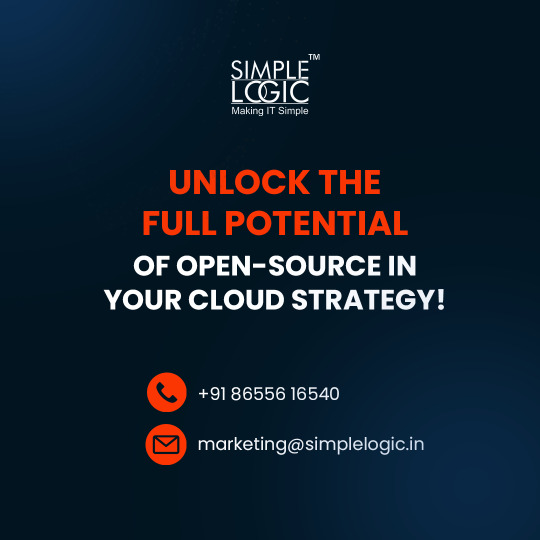
#DidYouKnow How Open Source Fuels Cloud Innovation! 🚀☁️
Swipe left to explore!
💻 Explore insights on the latest in #technology on our Blog Page 👉 https://simplelogic-it.com/blogs/
🚀 Ready for your next career move? Check out our #careers page for exciting opportunities 👉 https://simplelogic-it.com/careers/
#didyouknowfacts#knowledgedrop#interestingfacts#factoftheday#learnsomethingneweveryday#mindblown#openstack#ceph#ansible#prometheus#elasticsearch#opensource#cloud#cloudstrategy#didyouknowthat#triviatime#makingitsimple#learnsomethingnew#simplelogicit#simplelogic#makeitsimple
0 notes
Text
before: you had to go to the opera/theater/auditorium/concert venue to listen to music, performance
golden age of physical media libraries: cassettes, vhs, CDs, dvds, etc
enshittification: streaming subscriptions, everything's stored in the cloud
been thinking do i wanna try building a cheap opensource NAS, not having control of my stuff is maddening
fucked up that the home desktop computer went from something only niche hobbyist nerds or people with jobs that require them have to something every single household has and back to something only for niche hobbyist nerds or people with jobs that require them in the span of like 30 years
13K notes
·
View notes
Text
Level Up Your Linux Skills with Red Hat Training and Certification in 2025
The tech world is constantly evolving, and staying ahead of the curve is crucial for career growth. If you're looking to boost your Linux skills and validate your expertise, Red Hat Training and Certification programs are your go-to resources. As we step into 2025, let's explore why these programs are essential and what they offer.
Why Red Hat Training and Certification?
Red Hat is a leading provider of open-source solutions, and their training and certification programs are highly regarded in the IT industry. Here's why you should consider them:
Industry Recognition: Red Hat certifications are globally recognized and demonstrate your proficiency in Red Hat technologies.
Hands-on Learning: Red Hat courses emphasize practical, hands-on training, ensuring you gain real-world skills.
Career Advancement: Whether you're starting your IT career or aiming for a promotion, Red Hat certifications can significantly enhance your career prospects.
Up-to-Date Content: Red Hat continuously updates its curriculum to align with the latest technology trends and industry demands.
What's Available in 2025?
Red Hat offers a wide range of training and certification options, catering to various roles and skill levels. Some popular programs include:
Red Hat Certified System Administrator (RHCSA): This foundational certification validates your core system administration skills in a Red Hat Enterprise Linux environment.
Red Hat Certified Engineer (RHCE): Building upon the RHCSA, this certification focuses on automation and advanced system administration tasks using Ansible.
Red Hat Certified Specialist in OpenShift: This program covers various aspects of OpenShift, Red Hat's enterprise Kubernetes platform, including administration, development, and security.
Red Hat Certified Specialist in Ansible Automation: This certification validates your ability to use Ansible to automate IT tasks, including system administration, network automation, and application deployment.
In addition to these, Red Hat offers specialized certifications in areas like cloud computing, DevOps, and security. You can find a comprehensive list of their offerings on the Red Hat Training and Certification website.
How to Get Started
Ready to embark on your Red Hat learning journey? Here are some steps to get started:
Explore the Red Hat Training and Certification website: This is your primary resource for information on available courses, certifications, and learning resources.
Choose a learning path: Determine which certification aligns with your career goals and current skill level.
Select a training method: Red Hat offers various training options, including online courses, in-person classes, and self-paced learning.
Prepare for the exam: Utilize the study materials and practice exams provided by Red Hat to ensure you're ready for the certification exam.
Invest in Your Future
In today's competitive IT landscape, continuous learning is essential. Red Hat Training and Certification programs provide a valuable opportunity to enhance your skills, validate your expertise, and advance your career. By investing in your Red Hat education in 2025, you're investing in your future.
visit www.hawkstack.com
#RedHat #Training #Certification #Linux #OpenSource #ITCareer #RHCSA #RHCE #OpenShift #Ansible
0 notes
Video
youtube
Discover the EASY Way to Install LINUX Without the Hassle!
*Linux For DevOps:* https://www.youtube.com/playlist?list=PLGj4aMqxhpL6qwlxRuVljjIxvNoMy-W91 *Linux For DevOps: Beginner Level:* https://www.youtube.com/playlist?list=PLGj4aMqxhpL5bLDvXBIpOmS_Vh6U8tjM0 *Linux For DevOps: Intermediate Level:* https://www.youtube.com/playlist?list=PLGj4aMqxhpL79czyihLsCRXHePzY0zQuv ***************************** * Discover the EASY Way to Install LINUX Without the Hassle! * 🎥: https://youtu.be/V7ZOuK6o5KQ *****************************
Linux is a powerful, versatile operating system widely used for servers, development environments, and personal computing. If you're new to Linux, this guide will walk you through the installation process and initial setup to get you started.
Why Choose Linux? - Free and Open Source: Most Linux distributions are completely free to use. - Customizable: Tailor your operating system to your needs. - Secure and Reliable: Preferred for servers and development due to robust security. - Community Support: A vast, active community to help with troubleshooting and learning.
Step 1: Choose a Linux Distribution Popular Linux distributions include: - Ubuntu: Beginner-friendly and widely supported. - Fedora: Cutting-edge features for developers. - Debian: Stable and ideal for servers. - Linux Mint: Great for transitioning from Windows. - CentOS Stream: Suitable for enterprise environments.
Step 2: Download the ISO File 1. Visit the official website of your chosen Linux distribution. 2. Download the appropriate ISO file for your system (32-bit or 64-bit).
Step 3: Create a Bootable USB Drive To install Linux, you'll need a bootable USB drive: 1. Use tools like Rufus (Windows), Etcher, or UNetbootin to create a bootable USB. 2. Select the downloaded ISO file and the USB drive, then start the process.
Step 4: Install Linux 1. Insert the bootable USB into your computer and restart. 2. Access the BIOS/UEFI menu (usually by pressing `F2`, `F12`, `Esc`, or `Del` during startup). 3. Set the USB drive as the first boot device. 4. Follow the installation wizard to: - Select your language. - Partition your disk (use “Automatic” if unsure). - Create a user account and set a password.
Step 5: Perform Initial Setup After installation: 1. Update the System: ```bash sudo apt update && sudo apt upgrade -y # For Debian-based systems sudo dnf update # For Fedora-based systems ``` 2. Install Essential Software: - Text editors: `nano`, `vim`. - Browsers: `Firefox`, `Chromium`. - Development tools: `git`, `gcc`.
3. Enable Firewall: ```bash sudo ufw enable # Uncomplicated Firewall ```
4. Learn Basic Commands: - File navigation: `ls`, `cd`. - File management: `cp`, `mv`, `rm`. - Viewing files: `cat`, `less`.
Tips for Beginners - Experiment with a Live Environment before installing. - Use VirtualBox or VMware to practice Linux in a virtual machine. - Join forums like Ubuntu Forums, Reddit’s r/linux, or Linux Questions for support.
Linux installation, Linux beginner guide, Linux setup, how to install Linux, Linux for beginners, Linux distributions, Ubuntu installation, Linux Mint setup, Fedora installation guide, Linux tips
#Linux #LinuxForBeginners #Ubuntu #LinuxMint #Fedora #LinuxTips #OpenSource #LinuxInstallation #TechGuide #LinuxSetup #ClouDolus #ClouDolusPro
ubuntu,Getting Started with Linux Installation and Basic Setup,linux tutorial for beginners,open source,linux terminal,distrotube,ubuntu is bad,linux tutorial,linux for beginners,linux commands,Linux installation,Linux beginner guide,Linux setup,how to install Linux,Linux for beginners,Linux distributions,Ubuntu installation,Fedora installation guide,Linux tips,cloudolus,cloudoluspro,free,Linux,Linux for DevOps,Linux basics,DevOps basics,cloud computing,DevOps skills,Linux tutorial,Linux scripting,Linux automation,Linux shell scripting,Linux in DevOps,Ubuntu,CentOS,Red Hat Linux,DevOps tools,ClouDolus,DevOps career,Linux commands for beginners,Introduction to Linux for DevOps: Why It’s Essential,devops tutorial for beginners,learn devops,devops tutorial,Who Should Learn Linux for DevOps?,Why You Should Learn Linux for DevOps,Why Linux is Critical in DevOps,Why Linux Essential?,What Is Linux Overview?,What Linux Key Features?,What Linux Key Benefits?,What Is Linux Overview? Linux for DevOps,Linux for cloud,Linux training,devops tutorial Linux,Linux commands for beginners ubuntu,cloud computing Linux for DevOps
***************************** *Follow Me* https://www.facebook.com/cloudolus/ | https://www.facebook.com/groups/cloudolus | https://www.linkedin.com/groups/14347089/ | https://www.instagram.com/cloudolus/ | https://twitter.com/cloudolus | https://www.pinterest.com/cloudolus/ | https://www.youtube.com/@cloudolus | https://www.youtube.com/@ClouDolusPro | https://discord.gg/GBMt4PDK | https://www.tumblr.com/cloudolus | https://cloudolus.blogspot.com/ | https://t.me/cloudolus | https://www.whatsapp.com/channel/0029VadSJdv9hXFAu3acAu0r | https://chat.whatsapp.com/D6I4JafCUVhGihV7wpryP2 *****************************
*🔔Subscribe & Stay Updated:* Don't forget to subscribe and hit the bell icon to receive notifications and stay updated on our latest videos, tutorials & playlists! *ClouDolus:* https://www.youtube.com/@cloudolus *ClouDolus AWS DevOps:* https://www.youtube.com/@ClouDolusPro *THANKS FOR BEING A PART OF ClouDolus! 🙌✨*
#youtube#ubuntuGetting Started with Linux Installation and Basic Setuplinux tutorial for beginnersopen sourcelinux terminaldistrotubeubuntu is badlin
0 notes
Text
Linux Software Market on Track to Double by 2033 💻
Linux Software Market is set to witness substantial growth, expanding from $7.5 billion in 2023 to $15.2 billion by 2033, reflecting a robust CAGR of 7.2% over the forecast period. This market thrives on the open-source foundation of Linux, offering customizable, cost-effective, and secure software solutions for diverse industries.
To Request Sample Report : https://www.globalinsightservices.com/request-sample/?id=GIS32383 &utm_source=SnehaPatil&utm_medium=Article
Linux powers a broad spectrum of applications, from enterprise servers and cloud platforms to embedded systems and personal computing. The enterprise segment dominates the market, with businesses leveraging Linux for its scalability, reliability, and robust security. Cloud computing follows as a high-performing sub-segment, driven by organizations adopting cloud-based solutions to optimize IT infrastructure and reduce costs.
North America leads the Linux software market, benefiting from advanced technological infrastructure and a strong concentration of tech-forward enterprises. Europe is the second-largest region, with countries like Germany and the United Kingdom spearheading open-source adoption as part of their digital transformation efforts. Meanwhile, the Asia-Pacific region emerges as a key growth area, fueled by rapid industrialization and a burgeoning tech startup ecosystem that embraces Linux for its adaptability and community-driven development.
Emerging technologies such as virtualization, IoT, AI, and big data analytics are propelling Linux adoption across new frontiers, from web servers and networking to scientific research and software development. Flexible deployment options, including on-premise, cloud-based, and hybrid models, further enhance Linux’s appeal across industries like IT, BFSI, healthcare, and retail.
As the demand for secure, reliable, and flexible software solutions grows, the Linux software market continues to expand, driving innovation and fostering global collaboration.
#LinuxSoftware #OpenSource #CloudComputing #EnterpriseLinux #BigData #IoT #AI #LinuxKernel #DigitalTransformation #SoftwareDevelopment #TechInnovation #CyberSecurity #SystemAdministration #LinuxCommunity #CAGRGrowth
0 notes
Text
Tata Technologies Builds First-of-its-Kind Design Studio Using Llama 2 and Stable Diffusion 3

Tata Technologies has cracked the code on generative AI. Recently, the company told AIM that it has built a solution (design studio for automotive selling) using Llama 2 and Stable Diffusion 3 which will revolutionise the design process for automotive companies. This new solution is expected to enable rapid prototyping and visualisation of design changes, reducing the time for design iterations.
During the design process of an automobile, it’s common to undergo multiple changes before finalising one. “With this solution, engineers won’t need to use design softwares like Autodesk Maya, which can be quite expensive and cumbersome,” said Santosh Singh, executive vice president at Tata Technologies, adding that their solution is much more cost-effective and simple to use.
“The team uses generative AI to develop multiple design options on the fly. It helps reduce design time, engineering time, and product development time,” he added.
Singh said that car manufacturers can effortlessly introduce new models by modifying the existing design, like altering the front section, using generative AI. They simply need to mask the desired area of the vehicle for changes and input the prompt describing the new design.
He further said that Tata Technologies generative AI solutions are compatible with Azure and AWS as well as opensource models like Meta’s Llama 2 and Llama 3. “We are using open-source models because we can fine-tune them based on the requirement. With Llama 2, we have the base model ready; we just need to fine-tune and connect it with our internal data,” he added.
“We don’t run a model where we have to expose customer data to the cloud. The way we have designed our model is simple. It’s on the cloud only for LLM capabilities, the rest is within the premises, and we have a connector to train the data,” he explained.
Better than Autodesk Maya?
Industry-standard software like Autodesk Maya, CATIA, or Siemens NX are highly sophisticated. These programs offer a vast array of features for 3D modelling, simulation, and rendering, requiring significant training and practice to master effectively. Moreover, they can be expensive, making them less accessible to hobbyists or beginners.
Last year, Autodesk announced its plans to add generative AI capabilities across its suite of products. Its acquisition of Blank. AI’s generative AI capabilities enables rapid conceptual design exploration in the automotive sector. This allows for real-time creation, exploration, and editing of 3D models using natural language and semantic controls, eliminating the need for advanced technical skills.
Singh said that a major challenge Tata Technologies is facing today is to not be able to integrate its generative AI solutions to existing software like Siemens, Dassault, and Autodesk, which are used for designing vehicles. “These are all closed proprietary software systems, so they don’t allow external software to penetrate inside and access the designs,” he explained, saying this is where its Design Studio platform is quite flexible to use for companies.
What’s Next?
Tata Technologies has also built a Virtual Sales Assistant which helps people in sales to increase productivity by 15–20%. This AI-powered tool streamlines the sales process and empowers the front line sales team by providing them relevant product information on the go thereby optimises enhancing customer engagement and sales.
Moreover, the company has also developed the Warranty Analysis solution using generative AI which is very useful for identify the root causes of warranty claims and can empower the quality departments to identify and fix root cause of failure. The company is also currently working on two projects –a Factory Copilot solution. and Warranty Analysis using generative AI.
Factory Copilot aims to enhance productivity and quality in manufacturing plants by providing real-time support to workers through phone-based assistance, digital displays, and multilingual support.
“We are working with one of the biggest manufacturers in India to develop this. It’s currently in the R&D stage. We hope that in the next three months, we will have some clarity on how to make this happen,” said Singh.
On the other hand, Warranty Analysis and Repair Solutions leverage AI to optimise after-sales services, improving efficiency and customer satisfaction in warranty-related processes. “Through this solution, we are trying to reduce the analysis time and make it more accurate so that the team on the ground can get clear and correct insights on the problem,” said Singh.
Original source: https://www.tatatechnologies.com/media-center/tata-technologies-builds-first-of-its-kind-design-studio-using-llama-2-and-stable-diffusion-3/
Santosh Singh, EVP and Global Head — Marketing and Business Excellence
0 notes
Text
Why 2024 is the Real Year of Container vs VM
Why 2024 is the Real Year of Container vs VM #containers #virtualmachines #vms #docker #devops #opensource #hypervisor #cloud #cloudcontrolplane #ai #virtualizationhowto #vhtforums #cicd #homelab #homeserver #selfhosting #selfhosted
Wow, who could have foretold what was in store for 2024 with all the changes and shocking tectonic shifts that have happened over the course of the last few months. We have certainly had several good discussions and blog posts covering the topic of containers vs virtual machines and which is best and the use cases for both. However, I think it is time to have another discussion on this subject…
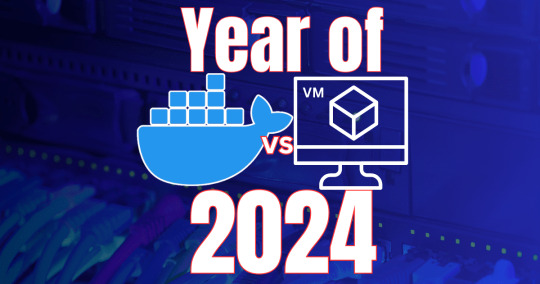
View On WordPress
0 notes
Text
Fivetran and BigQuery for automated fraud detection

What is fivetran?
Fivetran is a modern, cloud-based automated data movement platform, designed to offer organizations the ability to effortlessly extract, load and transform data between a wide range of sources and destinations.
Is fivetran opensource?
In 2012, Fivetran was developed as a managed, closed-source ELT solution.
Businesses require quicker data analysis and predictive insights in today’s dynamic environment in order to recognize and handle fraudulent transactions. Generally speaking, combating fraud using data engineering and machine learning involves these essential steps:
Data acquisition and ingestion: To ingest and store the training data, pipelines across multiple, disparate sources (file systems, databases, third-party APIs) are established. The development of machine learning algorithms for fraud prediction is facilitated by the abundance of valuable information present in this data.
Data analysis and storage: To store and process the ingested data, use an enterprise cloud data platform that is scalable, dependable, and high-performing.
Development of machine-learning models: Creating training sets from stored data and applying machine learning models to it in order to create predictive models that can distinguish between authentic and fraudulent transactions.
When developing data engineering pipelines for fraud detection, the following issues frequently arise:
Scale and complexity: When an organization uses data from multiple sources, ingesting that data can be a challenging process. Building internal ingestion pipelines can take weeks or months of data engineering resources, taking important time away from primary data analysis tasks.
Maintenance and administrative work: Manual data administration and storage, including cluster sizing, data governance, backup and disaster recovery, and data storage, can seriously impede business agility and postpone the creation of insightful data.
Steep skill requirements and learning curve: Implementing and utilizing fraud detection solutions can take a lot longer when a data science team is assembled to build machine learning models and data pipelines.
Three key themes need to be prioritized in order to effectively address these challenges: time to value, design simplicity, and scalability. These can be handled by utilizing BigQuery for sophisticated data analytics and machine learning capabilities, and Fivetran for data movement, ingestion, and acquisition.
Fivetran streamlines data integration
Unless you happen to be living it and dealing with it on a daily basis, it’s easy to underestimate the challenge of reliably persisting incremental source system changes to a cloud data platform. Their DB2 source required the addition of a new column, which set off an arduous process that took six months to complete before the change appeared in their analytics platform.
The company’s capacity to supply downstream data products with the most recent and accurate data was severely impeded by this delay. As such, any modification to the data structure of the source caused lengthy and inconvenient outages for the analytics process. The company’s data scientists were forced to sort through out-of-date and incomplete data.
To create efficient fraud detection models, all of their data had to be:
Curated, contextual: The data must be of the highest caliber, credible, transparent, and reliable, and it must also be unique to their use case.
Timely and accessible: Data must be high-performing, constantly available, and provide seamless access with well-known downstream data consumption tools.
The company selected Fivetran primarily because of its ability to handle schema drift and evolution from multiple sources to their new cloud data platform in an automated and dependable manner. Fivetran’s more than 450 source connectors enable the creation of datasets from a variety of sources, such as files, events, databases, and applications.
The decision changed the game. Fivetran’s reliable supply of high-quality data allowed the company’s data scientists to focus on quickly testing and improving their models, which helped them get closer to prevention by bridging the knowledge gap between insights and action.
The fact that Fivetran automatically and dependably normalized the data and handled any necessary changes from any of their on-premises or cloud-based sources as they moved to the new cloud destination was crucial for this company. Among them were:
Modifications to the schema (including additions)
Table modifications (adds, deletes, etc.) within a schema
A table’s columns can be added, deleted, soft deleted, and so forth.
Data type mapping and transformation (with SQL Server serving as an example source)
The company chose a dataset for a new connector by simply telling Fivetran how they wanted changes to the source system to be handled; no coding, configuration, or customization was needed. Based on particular use case requirements, Fivetran set up and automated this process, allowing the client to decide how often changes would be moved to their cloud data platform.
Hoe does Fivetran replicate databases
Beyond DB2, Fivetran showed that it could handle a broad range of data sources, including other databases and a number of SaaS applications. Big data sources, particularly relational databases, could handle substantial incremental change volumes with Fivetran. The current data engineering team was able to grow without adding more employees thanks to Fivetran’s automation. Business lines were able to start connector setup with appropriate governance and security measures in place thanks to Fivetran’s simplicity and ease of use.
Complete data provenance and good governance are essential in the context of financial services companies. These issues are addressed by the newly released Fivetran Platform Connector, which offers quick, easy, and nearly instantaneous access to rich metadata related to any Fivetran connector, destination, or even the entire account. End-to-end visibility into metadata (26 tables are automatically created in your cloud data platform – see the ERD here) for the data pipelines is provided by the Platform Connector, which has no Fivetran consumption costs. These pipelines include:
Source and destination lineage: schema, table, and column
Volumes and usage
types of connectors
Records
Roles, teams, and accounts
Financial services companies can better understand their data thanks to this increased visibility, which builds confidence in their data initiatives. It is a useful instrument for supplying data provenance and governance, which are essential components when discussing financial services and the data applications they use.
The scalable and effective data warehouse of BigQuery for fraud detection
BigQuery is an affordable, serverless data warehouse that is efficient and scalable, which makes it a good choice for enterprise fraud detection. Because of its serverless architecture, data teams can concentrate on data analysis and fraud mitigation techniques by reducing the amount of infrastructure setup and maintenance that is required.
Some of BigQuery’s main advantages are:
Faster generation of insights: BigQuery enables quick identification of fraudulent patterns and rapid data exploration by running ad hoc queries and experiments without capacity constraints.
Scalability on demand: BigQuery’s serverless architecture automatically adjusts its size in response to demand, preventing overprovisioning and guaranteeing that resources are available when needed. Data teams will no longer have to manually scale their infrastructure, which can be laborious and prone to mistakes. Understanding that BigQuery can scale while the queries are running or in-flight is crucial because it sets it apart from other contemporary cloud data warehouses.
Data analysis: BigQuery datasets are capable of storing and analyzing financial transaction data at nearly infinite scale, thanks to their ability to scale to petabytes. This gives you the ability to find hidden trends and patterns in your data for efficient fraud detection.
Machine learning: Using straightforward SQL queries, BigQuery ML provides a variety of pre-made fraud detection models, ranging from anomaly detection to classification. This facilitates quick model development for your unique requirements and democratizes machine learning. Here is a list of the various model types that BigQuery ML supports.
Model deployment for large-scale inference: Google Cloud’s Vertex AI can be used to make predictions in real-time on streaming financial data, even though BigQuery only supports batch inference. Use Vertex AI to deploy your BigQuery ML models and receive instant insights and actionable alerts that will protect your company in real time.
Fivetran and BigQuery work together to solve a complex problem with a straightforward design: a fraud detection tool that can produce actionable alerts in real time. In the upcoming blog series, we’ll concentrate on developing ML models in BigQuery that can precisely predict fraudulent transactions and implementing the Fivetran-BigQuery integration in a hands-on manner using an actual dataset.
Read more on Govindhtech.com
#Fivetran#BigQuery#frauddetection#machinelearningmodels#disasterrecovery#datastorage#dataintegration#technews#technology
0 notes